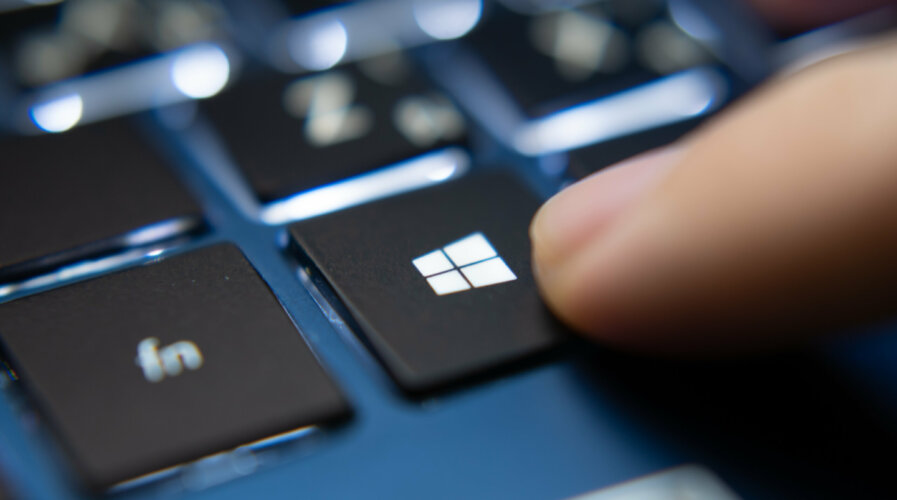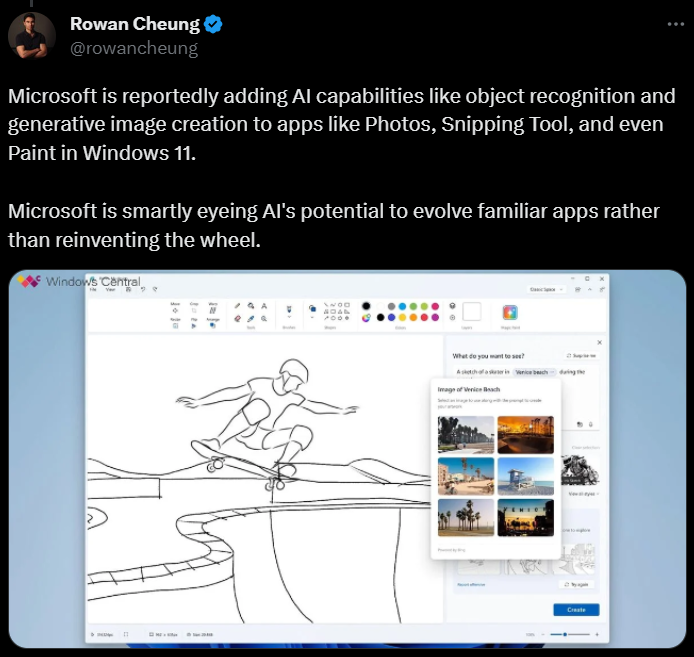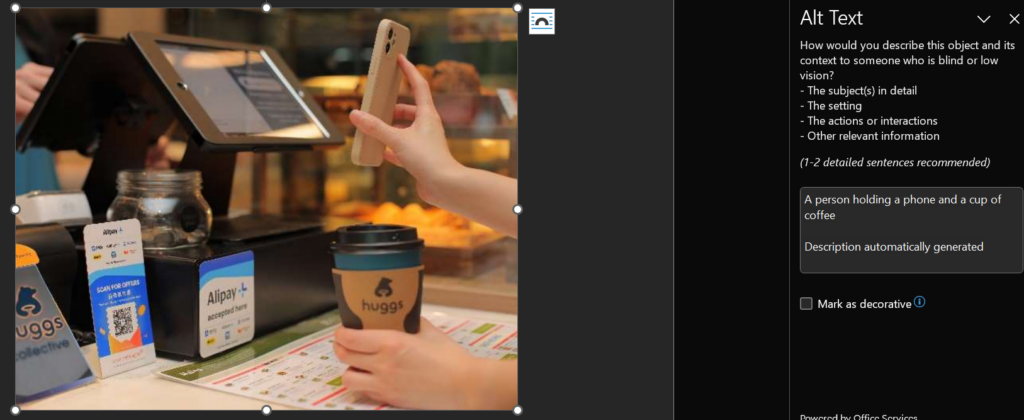
Navigating the AI-first shift in Microsoft’s Windows ecosystem. (Source – Shutterstock)
- Microsoft is weaving AI into Windows 11, aiming for a transformative 2024 update.
- Microsoft’s AI features in Windows 11 set it apart from Apple and Google, balancing innovation and caution.
- Microsoft though is approaching AI with a combination of boldness and caution.
Artificial Intelligence (AI) is more than a mere buzzword in the tech realm; it’s progressively becoming a fundamental aspect of our computing lives. Leading the charge is Microsoft, a software giant that aims to integrate AI as a core element, not just a supplement, within its Windows ecosystem. To realize this vision, the firm is seamlessly embedding AI features into its Windows operating system’s heart, elevating user engagement and setting new expectations for personal computers.
The recently introduced Bing logo is a subtle yet significant indication of this change. Strategically positioned at the bottom of the screen on newer Windows models, this inconspicuous addition represents a bold initiative by Microsoft’s CEO, Satya Nadella. Designed to steer Microsoft toward an AI-centric future, this feature grants Windows 11 users access to an OpenAI-powered chatbot called “Copilot,” eliminating the necessity for a separate browser or subscription.
The convenience of this integration is undoubtedly appealing, especially in contrast to Apple’s MacBook, which relies on the somewhat antiquated virtual assistant, Siri. However, this is just the tip of the iceberg; Nadella aims to embed AI across Microsoft’s entire suite of products – even internet relics.
AI upgrades in Windows 11: From Photos to Paint
Recent insights from WindowsCentral indicate that several standard Windows 11 applications, including Photos, Snipping Tool, and even the venerable Paint, are slated for AI upgrades. While some enhancements may require specialized hardware such as Neural Processing Units (NPUs) or Vision Processing Units (VPUs), others might not have any such prerequisites.
For example, Microsoft is adding AI-powered features to its Photos app that would enable users to single out elements like people or objects in pictures. Subsequently, these elements could be relocated within the same image or to different photos. It’s important to mention that similar capabilities already exist on iOS and Android systems.
Regarding the Snipping Tool, inside sources suggest Microsoft is looking to incorporate Optical Character Recognition (OCR) technology, allowing the software to identify text within screenshots for easier text extraction. Similarly, OCR tech is in development for the built-in Camera app, facilitating the capture of text from images.

Microsoft is reportedly adding AI capabilities like object recognition and generative image creation to apps in Windows 11. (Source – X)
Additionally, Microsoft is reportedly exploring adding generative AI to its Paint application in Windows 11. This would allow users to instruct Paint to generate a canvas based on specific parameters, mirroring current functionalities in Bing Image Creator. The AI enhancements in Paint are expected to utilize existing Bing technologies.
Although the rollout timeline for these AI features in Windows 11 remains uncertain, insiders confirm they’re still in the experimental phase. Meanwhile, a major Windows update planned for 2024 is expected to bring more advanced AI integrations. Windows 11’s AI initiatives are currently seen as a preliminary step, with more comprehensive features likely to follow.
One could speculate that AI-image generation companies might be getting nervous, right?
Learning from the past
Nevertheless, Microsoft is proceeding with caution, given its history of ambitious yet sometimes ill-fated projects—ranging from the discontinued Zune media player to ventures that didn’t quite succeed under former CEO Steve Ballmer.
Is such caution warranted? The fact that a corporate giant like Microsoft continues to take calculated risks should be seen as evidence of its unrelenting commitment to innovation.
However, Microsoft’s AI incorporation appears less aggressive compared to previous rollouts. These AI features have been subtly implemented and may only come to the forefront when they prove genuinely beneficial.
Here’s a quick demonstration: if you have a Microsoft 365 subscription, open a new Word document, insert a photo, and then request “Alt Text” via right-click. Magically, the AI will automatically provide a caption.

AI automatically provides a caption for an image in Word.
More AI functionalities are getting quietly embedded in Windows software, from personalized alerts to a “magic” eraser in Paint 3D, which echoes a popular Android feature.
Upcoming AI-powered Microsoft Office features: The Copilot revolution
We can look forward to additional Copilot-esque features in various Microsoft Office programs, including PowerPoint and Outlook. These applications are set to incorporate OpenAI’s cutting-edge GPT-4 technology, allowing the AI ‘Copilots’ to generate entire documents, emails, and presentations, informed by data from corporate records and conference calls.
OpenAI, a significant beneficiary of Microsoft investment, has fueled the AI discourse with its ChatGPT tool. The tool has recently gained considerable attention, shedding light on the advantages and limitations of chatbot tech.
[embed]https://www.youtube.com/watch?v=S7xTBa93TX8[/embed]
It’s worth noting that Microsoft has had a checkered history with office-based digital assistants. Many still recall “Clippy,” the infamous assistant that drew ridicule and was eventually disabled by most users. However, Microsoft has since redoubled its efforts to refine its approach.
A standout feature of this new tech wave is its ability to understand natural language queries, a capability highlighted by CEO Satya Nadella. Business Chat, a forthcoming app, is a blend between a chatbot and a personal assistant, capable of responding to simple English queries like summarizing meetings or identifying project risks, and offering mitigation advice.
Microsoft is – probably wisely – opting for a discreet rollout strategy, making these robust AI features more palatable to users.
Lastly, it’s crucial to pace these AI integrations because they are data-heavy and costly. Although an AI-enabled MS Paint could revitalize Windows’ image, the expenses incurred for processing such vast data for a global user base would undoubtedly be significant.



0 Comments